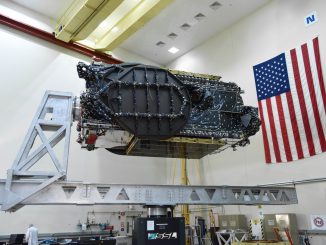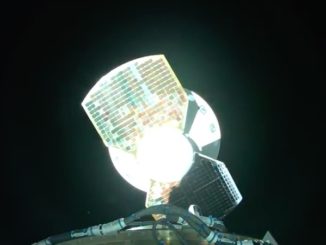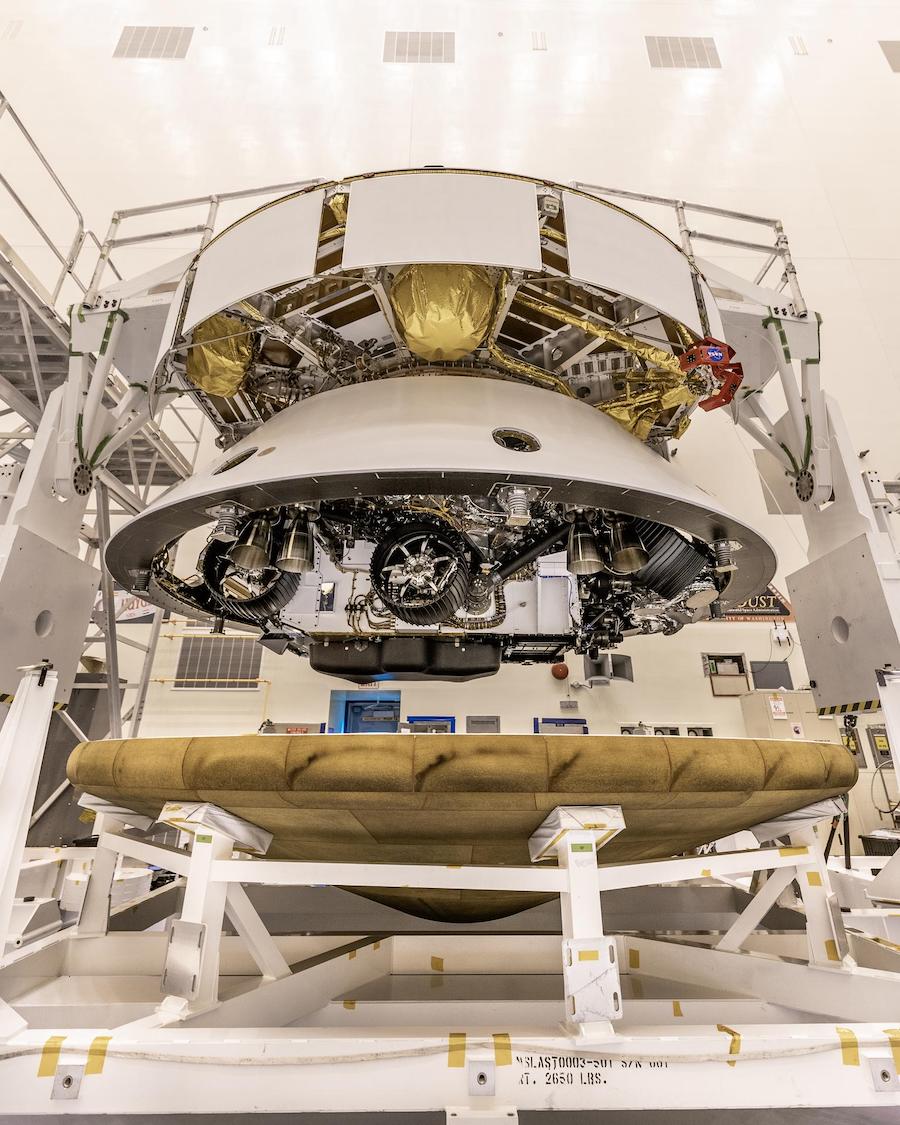
NASA’s Perseverance rover has been closed up inside its protective aeroshell, the structure that will protect the spacecraft when it plunges into the Martian atmosphere, in preparation for launch no earlier than July 20 from Cape Canaveral.
The six-wheeled Mars rover was connected with its descent stage earlier this year inside a clean room at the Kennedy Space Center in Florida. Technicians and engineers working amid the coronavirus pandemic affixed the rover and descent system inside the spacecraft’s backshell, then mounted the atmospheric entry vehicle onto the cruise stage, which will shepherd the spacecraft from Earth to Mars.
Some of the final pieces to be added to the rover were the super-clean sample collection tubes that the Perseverance rover will use to gather core samples on Mars for eventual return to Earth.
With the tubes installed, ground crews at the Kennedy Space Center added the rover’s heat 15-foot-diameter (4.5-meter) heat shield to close up the rover inside the cocoon that will protect it during its scorching hot entry into the atmosphere of Mars.
The next step to prepare the Perseverance rover for launch was mounting the spacecraft on the adapter structure that will connect the payload to its United Launch Alliance Atlas 5 rocket. Those connections are scheduled for completion this week, followed by encapsulation inside the Atlas 5’s bulbous white payload fairing, made by RUAG Space in Switzerland.
Once that is complete, teams will transfer the spacecraft inside the fairing to ULA’s Vertical Integration Facility at Cape Canaveral Air Force Station, where it will be hoisted by crane atop the Atlas 5 rocket around June 26.
In early July, technicians will install the rover’s plutonium power source, which will generate electricity throughout Perseverance’s mission.
Liftoff is scheduled for no earlier than July 20 during a two-hour window opening at 9:15 a.m. EDT (1315 GMT). The mission’s launch period extends through at least Aug. 11, and could potentially extended to Aug. 15, according to Omar Baez, NASA’s launch director for the mission.
The rover must launch in July or August in order
The Perseverance rover is a follow-up to NASA’s Curiosity rover, which landed on Mars in 2012. But Perseverance carries a different set of scientific instruments and sports several key technological upgrades, including improved landing navigation to better target a pinpoint touchdown on Mars on Feb. 18, 2021.
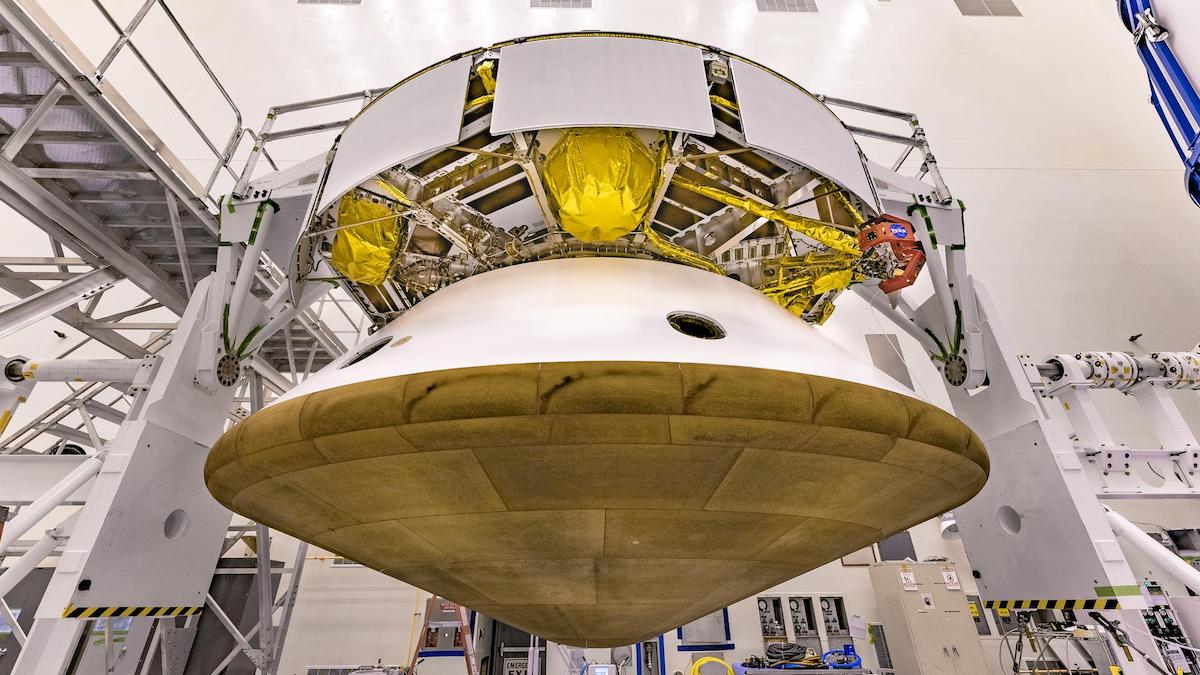
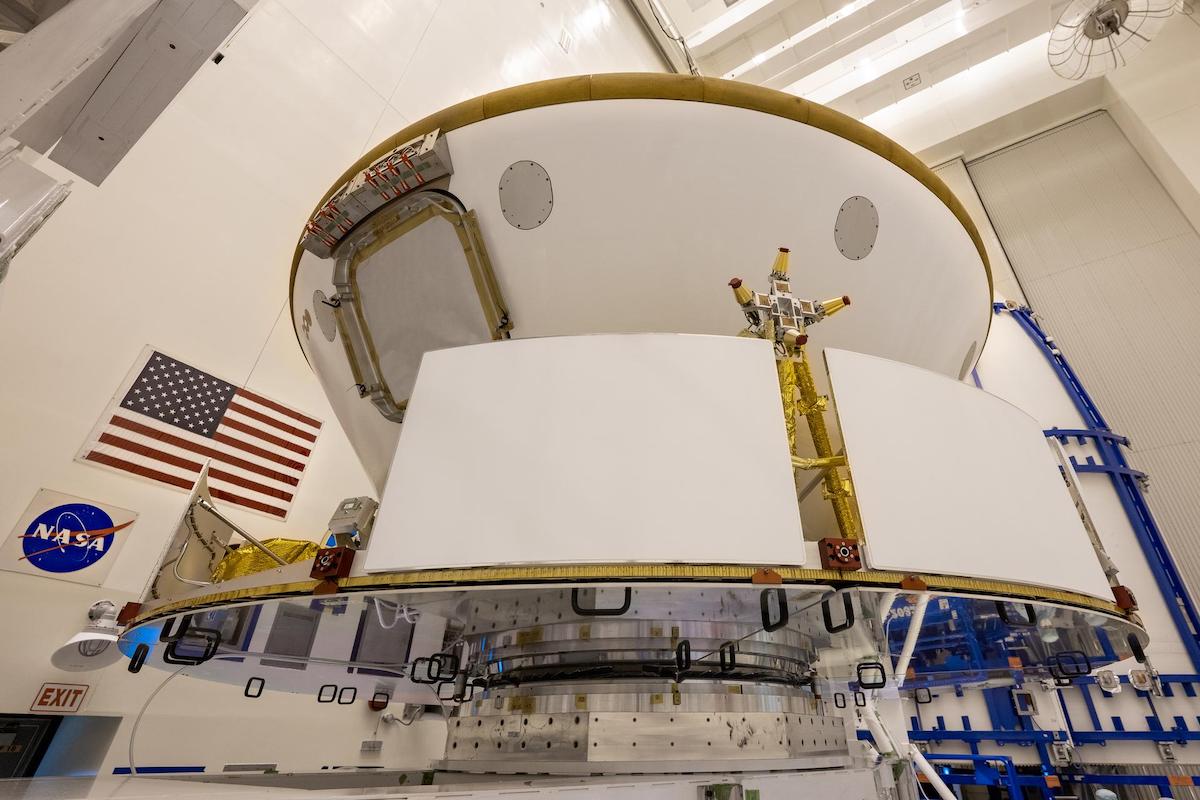
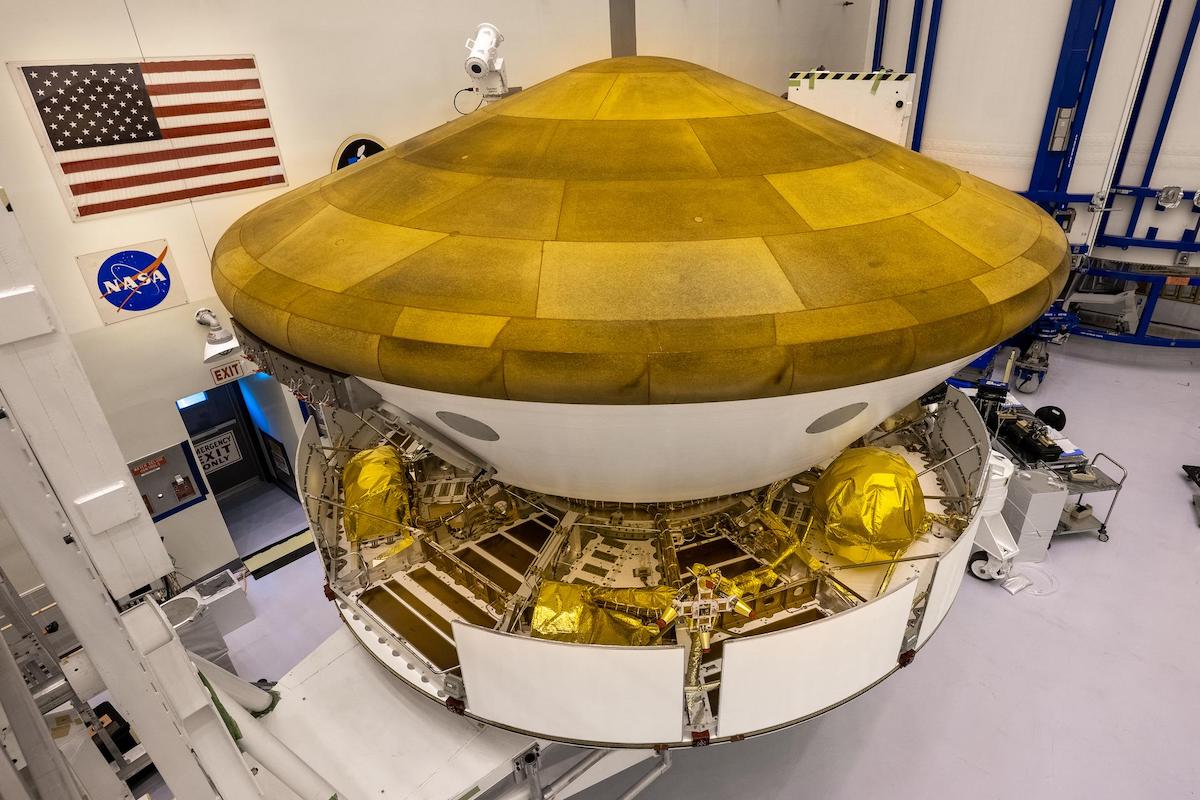
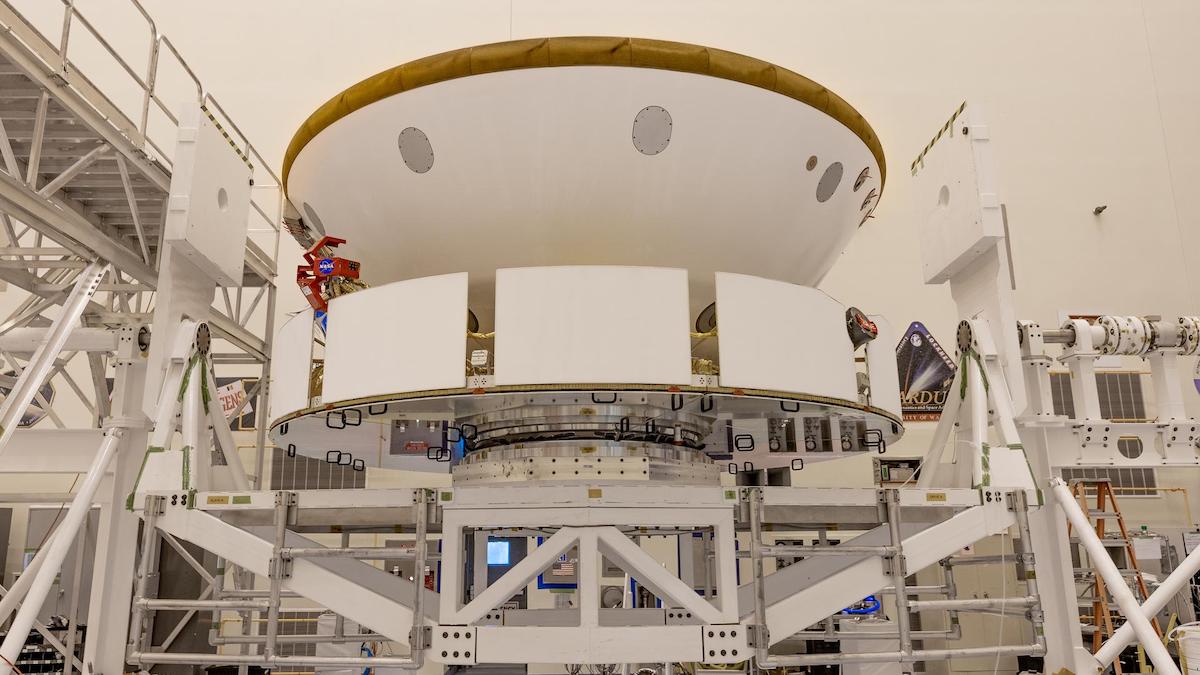
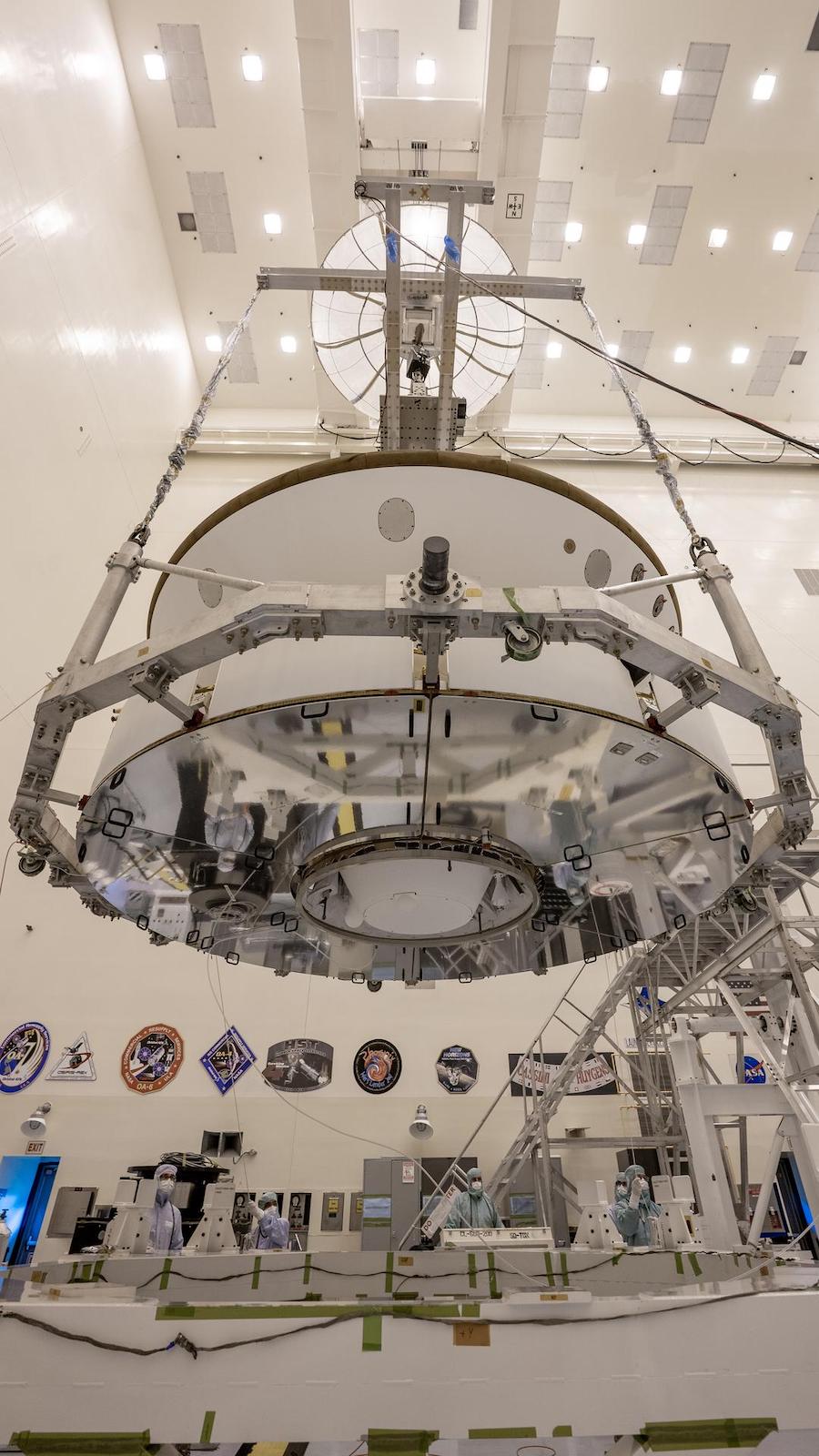
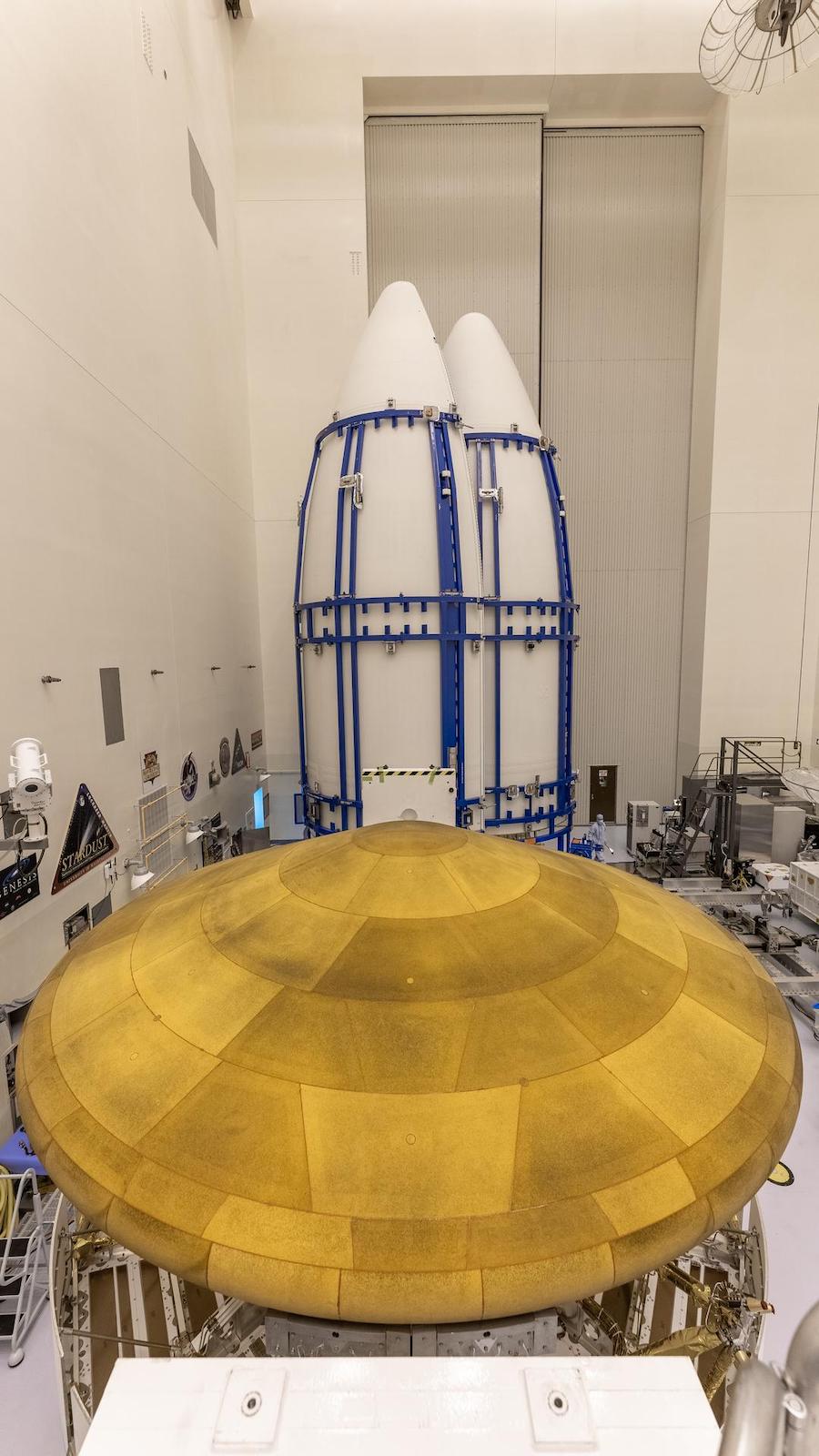
Email the author.
Follow Stephen Clark on Twitter: @StephenClark1.

